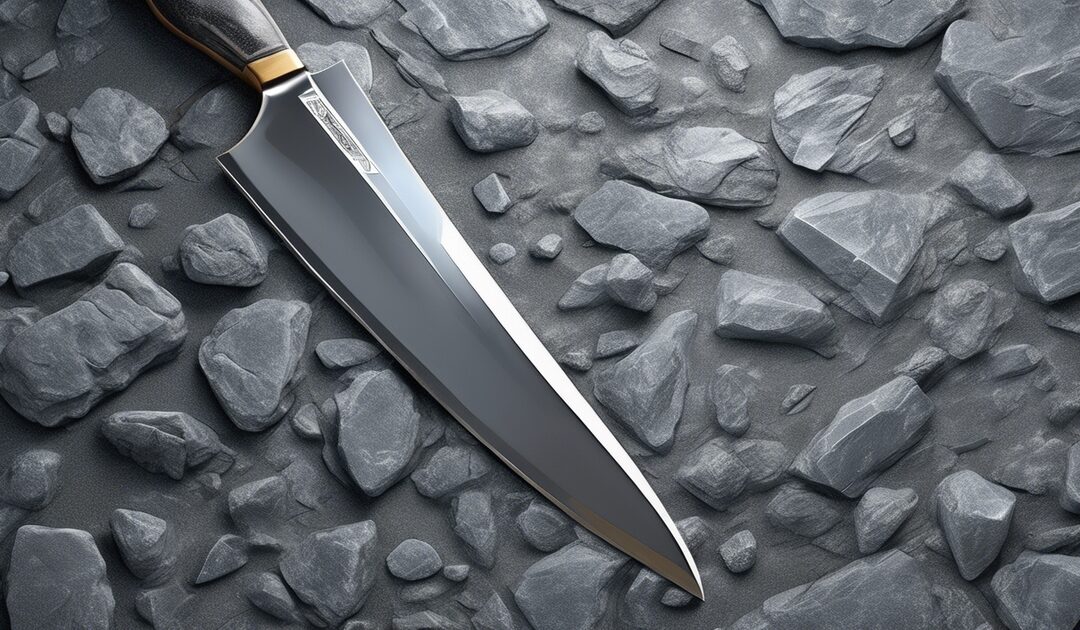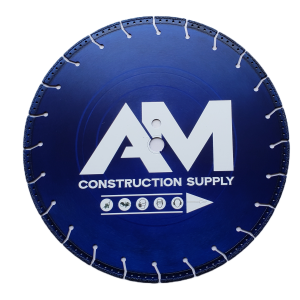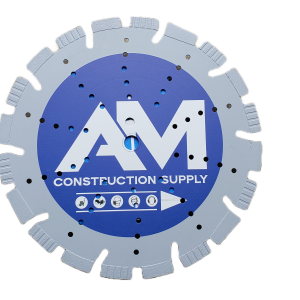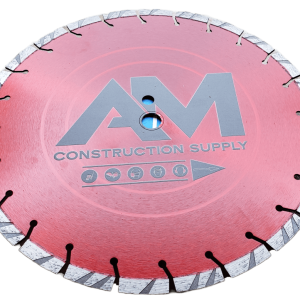- Key Takeaways
- Understanding Diamond Blades
- Benefits of Quality Blades
- Selecting the Right Blade
- Why Choose Quality Diamond Blades
- Cutting Different Stone Types
- Safety Tips for Cutting Stone
- Maintenance and Care
- Real-Life Applications
- Testimonials and Reviews
- Final Remarks
- Frequently Asked Questions
- What makes a diamond blade suitable for cutting stone?
- How do I choose the right diamond blade for my project?
- Why should I invest in quality diamond blades?
- Can one diamond blade cut all types of stone?
- What safety measures should I follow when using a diamond blade?
- How do I maintain my diamond blade for longevity?
- Are there real-life success stories of using quality diamond blades?
Ever wondered what sets the best diamond blade for saw cutting stone, tiles, masonry, and diamonds apart from the rest? Cutting through stone demands precision, endurance, and, most importantly, the right tool. In a sea of options, identifying that perfect diamond blade can be as challenging as the material itself. This guide cuts straight to the heart of the matter, spotlighting key features that define superior performance in diamond blades. Whether you’re a seasoned professional or tackling a DIY project, understanding these essentials will ensure your next cut is clean, precise, and efficient. Dive into the world of high-quality diamond blades with us and discover how to elevate your stone-cutting game to new heights.
Key Takeaways for Stone Cutting Diamond Blades
- Choose the Right Blade for Your Stone: Not all diamond blades are suitable for every type of stone. Selecting the correct blade based on the stone you’re cutting (granite, marble, etc.) ensures efficient and clean cuts.
- Invest in Quality: High-quality diamond blades may come with a higher upfront cost but offer better performance and longevity, ultimately saving money and time in the long run.
- Understand Blade Specifications: Familiarize yourself with the specifications of diamond blades, such as the bond, diamond concentration, and segment shape, to make an informed choice that matches your cutting needs.
- Safety is Paramount: Always follow safety guidelines when cutting stone to prevent accidents. Using the right blade also contributes to safer operations.
- Regular Maintenance Extends Blade Life: Proper care and maintenance of your diamond blade can significantly extend its life and maintain its cutting efficiency.
- Listen to Others’ Experiences: Testimonials and reviews can offer valuable insights into the performance and reliability of different diamond blades, helping you make a better-informed decision.
Understanding Diamond Blades and ones that cut stone
Types of Blades
Diamond blades come in various types, each suited to specific cutting tasks. Continuous rim blades offer precise cuts with minimal chipping, making them ideal for materials like marble and granite. Turbo blades, with their serrated edges, cut faster but may leave a rougher finish. Segmented rim blades are the go-to for harder materials, providing quick cuts with more chipping risk. Different stones require different blade types. For instance, soft limestone pairs well with a continuous rim blade for a smooth finish. In contrast, hard quartz might need a segmented rim blade for efficiency. The choice of blade significantly affects the cutting experience, impacting both chipping and accuracy.
Cutting Techniques
Using diamond blades properly can greatly enhance cutting performance. Wet cutting techniques reduce dust and cool the blade, extending its life and reducing wear. Dry cutting is faster but requires intermittent pauses to prevent overheating. Achieving clean cuts involves maintaining the right blade angle and adjusting the feed rate to match the stone’s hardness. Matching these techniques with the correct blade type ensures optimal results and longevity of the blade.
Material Compatibility
The hardness of the stone dictates the choice of diamond blade. The soft matrix principle suggests that harder stones should be cut with a blade that has a softer bond to allow for new diamonds to be exposed as needed. Conversely, softer stones need blades with a harder bond to slow wear on the diamonds. Common stone types like granite, marble, and sandstone each have specific blade requirements. Granite works best with segmented or turbo blades due to its hardness. Marble needs continuous rim blades for clean cuts without chipping. Understanding material properties is crucial to prevent premature blade wear and achieve clean cuts. This knowledge ensures that craftsmen select the right diamond blade for their project’s specific needs.
Benefits of Stone Cutting diamond blades
Increased Efficiency
Selecting the right diamond blade can dramatically cut down on project time. Different types of blades are optimized for various materials, ensuring faster cuts without sacrificing quality. This efficiency is crucial in professional settings where time equals money. Advanced technologies in blade manufacturing also play a pivotal role. They enhance cutting speed while maintaining the integrity of the stone. For contractors, this means being able to complete more projects within the same timeframe, boosting overall productivity. Moreover, using blades that match job requirements proves cost-effective. It minimizes wastage of resources and ensures that every cut counts, saving both time and materials.
Longer Lifespan
The height of the segment or rim on a diamond blade significantly impacts its longevity. Blades with taller rims tend to last longer because they have more diamond segments to wear down before needing replacement. This translates into economic benefits as it reduces the frequency of purchasing new blades. Proper selection and usage are key to extending a blade’s life. Matching the blade to the material being cut not only improves efficiency but also prevents premature wear and tear. Routine maintenance is another crucial factor. Regular checks for wear, ensuring proper installation, and cleaning can greatly contribute to a longer lifespan for diamond blades.
Precision Cutting
For jobs requiring high precision, such as countertop fabrication or detailed architectural work, continuous rim blades are ideal. They offer smooth cuts with minimal chipping, essential for high-quality finishes. Precision cutting is not just about aesthetics; it’s also about fit and functionality. In applications like fitting stone countertops, even minor inaccuracies can lead to significant issues during installation. Choosing the right blade and mastering cutting techniques are vital for projects demanding high precision. Understanding the material properties and how different blades interact with them can guide users toward making informed decisions that ensure clean, precise cuts every time.
Selecting the Right Blade- Quality Diamond Blades
Blade Diameter
The size of a diamond blade, or its diameter, plays a crucial role in determining how deep it can cut through stone. Larger blades enable deeper cuts, but it’s essential to ensure that the blade fits the cutting equipment being used. Blade diameters range from small 4-inch blades for detailed work to large 14-inch options for heavy-duty tasks. For intricate designs or tight spaces, smaller blades are preferable. They offer precision and are easier to handle. On the other hand, larger projects requiring deep cuts will need bigger blades. The key is matching the blade size with both the saw and the project’s requirements for an efficient and safe operation.
Segment Type
Diamond blades come in three main segment types: segmented, turbo, and continuous rim. Each has its unique advantages based on the cutting task at hand.
- Segmented blades are ideal for dry cutting. They have gaps between segments that assist in cooling the blade and removing debris.
- Turbo segments combine speed and smoothness by using a serrated edge to cut faster while minimizing chipping.
- Continuous rim blades deliver the cleanest cuts for materials like marble or granite but require water to cool down during operation.
The choice of segment type greatly affects how well debris is removed and how efficiently the blade cools down during cuts. For hard materials or precise cuts, a continuous rim might be best. However, for quicker jobs where speed is a priority, turbo or segmented blades could be more suitable.
Bond Hardness
The bond hardness of a diamond blade dictates its durability and cutting ability on various stone types. A harder bond is necessary when cutting softer materials to prevent premature wear on the diamonds. Conversely, softer bonds are better suited for harder materials to ensure that new diamonds are exposed as needed for continuous cutting efficiency. Understanding this balance is vital for selecting a diamond blade that not only performs well but also lasts longer. Blades with the right bond hardness maximize both cutting performance and longevity, making them cost-effective choices in the long run.
Why Choose Quality Diamond Blades
Superior Materials
High-quality diamond blades stand out because of their superior materials. The diamond grit and metal matrix are crucial. They determine the blade’s performance and durability. Better materials mean cleaner cuts, a longer lifespan, and less wear on the blade. e manufacturers set the standard with their use of superior materials. These companies understand that quality components lead to better overall performance. Their products are known for lasting longer and performing better than others.
Advanced Technology
The latest advancements in technology have significantly improved diamond blades. Laser welding and tensioned cores are game-changers. They enhance the blade’s stability, speed up cutting, and increase precision. These technologies also contribute to the blade’s durability. Leading manufacturers often incorporate such innovations into their products. This makes their blades more reliable and efficient than those using older methods.
Customer Satisfaction
Satisfied customers often share how specific diamond blades have improved their work. Testimonials and case studies highlight these successes. They underline the importance of choosing quality blades for better performance and efficiency. Customer support and product guarantees play a big role in satisfaction too. Brands with high ratings in customer satisfaction usually offer excellent support and solid guarantees. Their commitment to quality is clear, making them preferred choices among users.
Cutting Different Stone Types
Granite Cutting
Selecting the right diamond blade for cutting granite is crucial due to its hardness and abrasiveness. Look for blades designed specifically for granite, which often feature a softer bond to ensure the diamond segments wear at a rate that keeps them sharp. This is essential for smooth cuts. Wet cutting techniques are highly recommended for granite. They not only reduce dust but also extend the life of the blade by keeping it cool during cuts. Many professionals have seen success with this method, as it allows for longer work periods without damaging the blade or compromising safety. Successful case studies often highlight projects where specific types of diamond blades were chosen for their efficiency and durability in granite cutting tasks. These examples serve as a testament to selecting the appropriate tool for the job.
Marble Cutting
When it comes to marble, precision and minimal chipping are paramount. Blades with fine diamonds and a smooth edge are ideal, as they can cut through marble with less friction and reduce chip-out. The right blade ensures a clean finish, enhancing the stone’s natural beauty. Marble poses unique challenges due to its softness compared to other stones like granite or quartz. Specialized blades that cater to marble’s delicate nature can significantly mitigate these issues, allowing for smoother cuts and less waste. Examples of successful marble cutting projects often include instances where specific diamond blades were utilized, showcasing their ability to achieve flawless results. These projects underline the importance of choosing the right equipment for marble works.
Quartz Cutting
Quartz demands careful consideration due to its hardness and potential for chipping. Blades designed for quartz typically have a high diamond concentration and a hard bond to withstand the material’s toughness. This combination allows for precise cuts without sacrificing blade life. For quartz, using blades that offer clean, precise cuts is essential. Techniques such as scoring lightly before making a full cut can also help minimize chipping and achieve cleaner edges. Successful quartz cutting projects highlight how effective blade selection and cutting techniques can lead to outstanding outcomes. These cases demonstrate that with the right tools, even challenging materials like quartz can be handled efficiently.
Safety Tips for Cutting Stone
Proper Equipment
Using the right cutting equipment is crucial when working with diamond blades. Not all blades are suitable for every stone type, as discussed previously. Matching your blade to your machine ensures optimal performance and safety. For instance, a blade designed for granite may not be the best choice for softer stones like limestone. It’s important to regularly check your equipment. This includes inspecting the blade for wear and ensuring it’s properly attached to the machine. Maintenance prevents accidents and extends the life of both your blade and cutting equipment.
Blade Handling
Safety guidelines are essential when handling diamond blades. These tools are incredibly sharp and require careful handling to prevent injury. Always wear protective gloves when installing or changing a blade. The correct way to mount a blade cannot be overstated. Ensure it’s securely attached before starting your machine. A loose blade can cause serious accidents. Also, after use, clean and store your blades in a dry place to maintain their condition.
Work Area Setup
A well-organized work area is key to safe and efficient stone cutting. First, consider your cutting method. If you’re wet cutting, set up a reliable water supply to cool the blade and minimize dust. For dry cutting, ensure you have an effective dust management system in place. Proper lighting and workspace layout play significant roles in both safety and accuracy during cutting operations. Good lighting helps you see clearly, reducing the risk of mistakes that could lead to accidents or damage to the stone.
Maintenance and Care
Cleaning Blades
Regular cleaning of diamond blades is crucial to maintain their cutting efficiency. After each use, it’s important to remove any debris that could lead to buildup on the blade. This buildup can significantly affect the blade’s performance. A soft brush and water are often enough to clean the blade effectively. For tougher debris, a mild detergent mixed with water can be used. It’s essential to avoid harsh chemicals that could damage the diamond segments. The importance of regular cleaning cannot be overstressed. It not only extends the blade’s life but also ensures consistent cutting performance. Make it a habit to clean your blades after every use.
Storage Tips
Proper storage of diamond blades is key to preventing damage and corrosion. Environmental factors like humidity can adversely affect the blades if not stored correctly. Using protective cases or racks for organizing your blades is recommended. These storage solutions help in preventing accidental contact that could lead to chips or cracks in the blade. Proper blade storage benefits include maintaining the blade’s condition and ensuring it is ready for use whenever needed. Keeping blades in their original packaging when not in use can further protect them from environmental damage.
Inspection Routine
Developing a routine inspection checklist for diamond blades is vital for their longevity and safety during use. Look for signs of wear, such as uneven segment wear, damage, or loss of segments. Regular inspections allow you to identify issues early, which helps in preventing equipment failure during critical operations. It’s crucial to assess the condition of your blades regularly and decide when replacement is necessary. If a blade shows significant signs of wear or damage, it may no longer be safe or effective for cutting stone.
Real-Life Applications
Construction Projects
Diamond blades play a crucial role in large-scale construction projects. Their efficiency and durability make them indispensable tools. For instance, during the construction of skyscrapers, specific diamond blades are selected for their speed and precision. This choice ensures that materials like reinforced concrete and granite are cut quickly and accurately. Selecting the right blade depends on the construction material and project requirements. A case study from 2018 highlighted how a particular diamond blade type significantly reduced construction time for a major bridge project. The use of these blades led to smoother cuts and fewer replacements, showcasing their effectiveness in demanding environments.
Home Renovation
For home renovation enthusiasts, professional-grade diamond blades are game-changers. They offer unmatched advantages in DIY applications. When cutting common renovation materials like tile, stone, or concrete, choosing the right blade is key to achieving clean cuts. One homeowner’s renovation project stands out where high-quality diamond blades were used to remodel a kitchen with intricate stone worktops. The project was completed faster than anticipated, thanks to the precision cutting capabilities of the chosen blades. Tips for selecting the best blade include considering the material hardness and the type of cut required—whether it be straight lines or curves.
Artistic Sculpting
In artistic stone sculpting projects, diamond blades provide precision and control that artists need. Selecting the right type of blade is crucial for intricate cuts and fine detailing in sculpture work. Artists often rely on specific diamond blades designed for delicate tasks to bring their visions to life. Examples abound of sculptors who swear by certain brands or types of diamond blades for their projects. One notable artist credits his success in creating detailed marble sculptures to his choice of ultra-fine diamond blades which allow for exquisite detailing without damaging the stone.
Testimonials and Reviews
Professional Endorsements
Professionals in the stone-cutting industry often rely on high-quality diamond blades to ensure precision and efficiency. Endorsements from these experts play a crucial role in guiding consumers towards the best products. These recommendations come from years of experience and rigorous testing under various conditions. Brands that receive endorsements from reputable professionals see a significant boost in credibility. For instance, a renowned stone mason might publicly endorse a specific diamond blade for its unparalleled durability and cutting precision. Such endorsements not only validate the product’s quality but also build customer trust. They serve as a beacon, directing consumers towards diamond blades that professionals trust for their projects.
Customer Feedback
Positive experiences shared by customers highlight the effectiveness of certain diamond blades in real-life applications. Feedback often reflects improved cutting results, such as smoother finishes or faster cutting times. This input is invaluable for both potential buyers and manufacturers. Manufacturers use this feedback to refine their products. They address common concerns and strive to enhance their offerings based on customer experiences. Positive reviews can significantly influence other customers’ purchasing decisions, acting as word-of-mouth marketing for the brand. One customer shared how switching to a recommended diamond blade reduced their project time by half while delivering cleaner cuts. Such testimonials are powerful; they not only showcase the product’s capabilities but also help others make informed decisions.
Final Remarks
Selecting the best diamond blade for cutting stone isn’t just about getting the job done; it’s about doing it efficiently, safely, and with precision. You’ve learned how understanding diamond blades, recognizing their benefits, and choosing the right one can significantly impact your work quality and outcome. Cutting different stone types demands specific blades, and knowing which to choose sets you apart. Moreover, prioritizing safety, maintenance, and real-life applications ensures longevity in both your tools and craftsmanship. Testimonials have shown that investing in quality blades pays off, enhancing performance and satisfaction. Now’s the time to take your knowledge into action. Choose a quality diamond blade that meets your needs and witness the difference in your next project. Remember, the right tools not only make your work easier but also elevate the final product. Don’t settle for less; aim for the best to achieve outstanding results in every cut.
Frequently Asked Questions
What makes a diamond blade suitable for cutting stone?
Diamond blades designed for stone cutting feature high-quality diamonds and a specific bond matrix, ensuring efficient and precise cuts through various stone types.
How do I choose the right diamond blade for my project?
Select a blade based on the stone type you’re cutting, the saw you’re using, and the desired cut quality. Consider blades with attributes tailored to your specific needs.
Why should I invest in quality diamond blades?
Quality blades offer longer life, faster cutting speed, and better precision. This efficiency saves time and reduces replacement costs, making them a cost-effective choice in the long run.
Can one diamond blade cut all types of stone?
No, different stones require blades with varied diamond grits and bonds. Choosing a blade matched to your stone ensures optimal performance and longevity.
What safety measures should I follow when using a diamond blade?
Always wear appropriate personal protective equipment (PPE), ensure proper blade installation, and follow manufacturer guidelines to prevent accidents during operation.
How do I maintain my diamond blade for longevity?
Regularly check for wear, ensure it’s used at the correct speed, and store properly. Cleaning after use can also extend its lifespan by preventing buildup.
Are there real-life success stories of using quality diamond blades?
Yes, many professionals share testimonials highlighting how quality diamond blades have significantly improved their efficiency and results in various stone-cutting projects.





